Soumyajyoti Dey
Could We Generate Cytology Images from Histopathology Images? An Empirical Study
Mar 16, 2024Abstract:Automation in medical imaging is quite challenging due to the unavailability of annotated datasets and the scarcity of domain experts. In recent years, deep learning techniques have solved some complex medical imaging tasks like disease classification, important object localization, segmentation, etc. However, most of the task requires a large amount of annotated data for their successful implementation. To mitigate the shortage of data, different generative models are proposed for data augmentation purposes which can boost the classification performances. For this, different synthetic medical image data generation models are developed to increase the dataset. Unpaired image-to-image translation models here shift the source domain to the target domain. In the breast malignancy identification domain, FNAC is one of the low-cost low-invasive modalities normally used by medical practitioners. But availability of public datasets in this domain is very poor. Whereas, for automation of cytology images, we need a large amount of annotated data. Therefore synthetic cytology images are generated by translating breast histopathology samples which are publicly available. In this study, we have explored traditional image-to-image transfer models like CycleGAN, and Neural Style Transfer. Further, it is observed that the generated cytology images are quite similar to real breast cytology samples by measuring FID and KID scores.
Fuzzy Rank-based Late Fusion Technique for Cytology image Segmentation
Mar 16, 2024Abstract:Cytology image segmentation is quite challenging due to its complex cellular structure and multiple overlapping regions. On the other hand, for supervised machine learning techniques, we need a large amount of annotated data, which is costly. In recent years, late fusion techniques have given some promising performances in the field of image classification. In this paper, we have explored a fuzzy-based late fusion techniques for cytology image segmentation. This fusion rule integrates three traditional semantic segmentation models UNet, SegNet, and PSPNet. The technique is applied on two cytology image datasets, i.e., cervical cytology(HErlev) and breast cytology(JUCYT-v1) image datasets. We have achieved maximum MeanIoU score 84.27% and 83.79% on the HErlev dataset and JUCYT-v1 dataset after the proposed late fusion technique, respectively which are better than that of the traditional fusion rules such as average probability, geometric mean, Borda Count, etc. The codes of the proposed model are available on GitHub.
Cytology Image Analysis Techniques Towards Automation: Systematically Revisited
Mar 17, 2020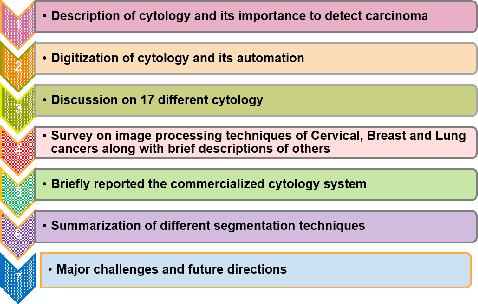
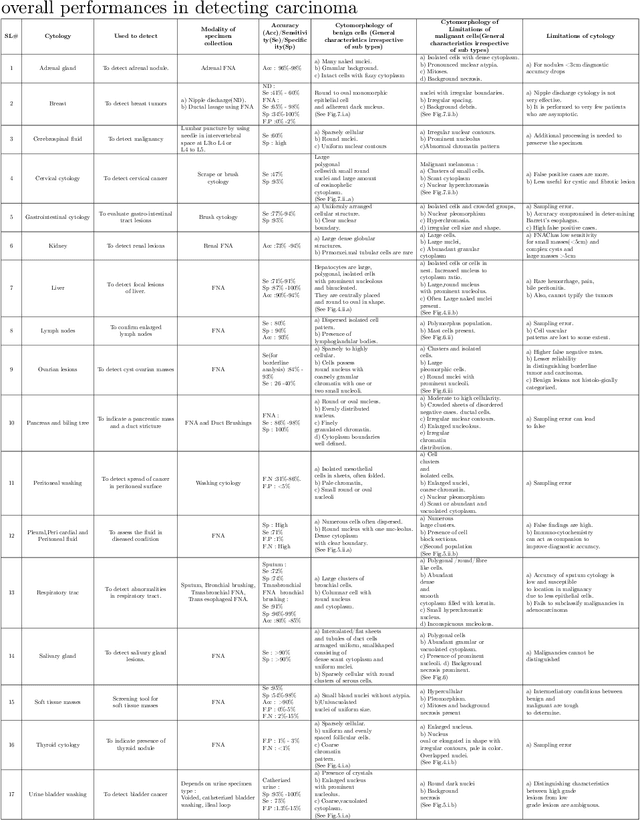
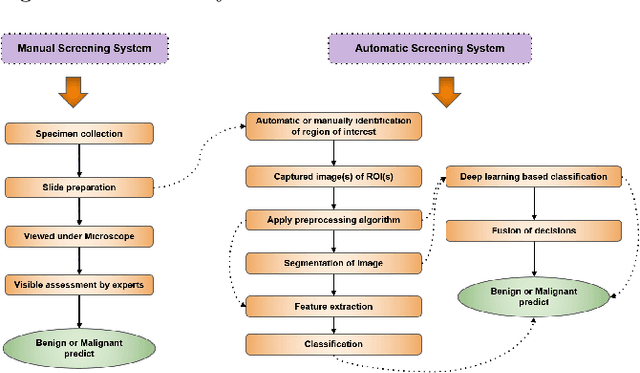
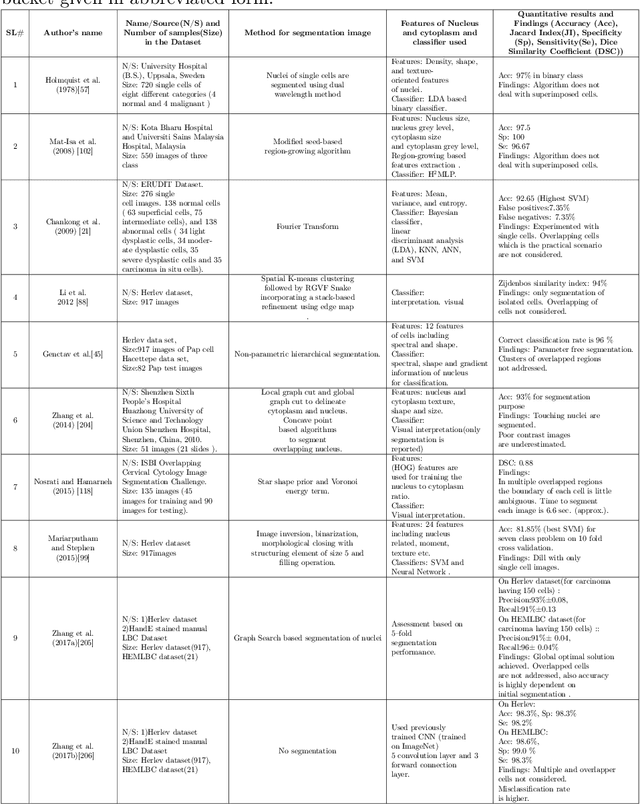
Abstract:Cytology is the branch of pathology which deals with the microscopic examination of cells for diagnosis of carcinoma or inflammatory conditions. Automation in cytology started in the early 1950s with the aim to reduce manual efforts in diagnosis of cancer. The inflush of intelligent technological units with high computational power and improved specimen collection techniques helped to achieve its technological heights. In the present survey, we focus on such image processing techniques which put steps forward towards the automation of cytology. We take a short tour to 17 types of cytology and explore various segmentation and/or classification techniques which evolved during last three decades boosting the concept of automation in cytology. It is observed, that most of the works are aligned towards three types of cytology: Cervical, Breast and Lung, which are discussed elaborately in this paper. The user-end systems developed during that period are summarized to comprehend the overall growth in the respective domains. To be precise, we discuss the diversity of the state-of-the-art methodologies, their challenges to provide prolific and competent future research directions inbringing the cytology-based commercial systems into the mainstream.
SynCGAN: Using learnable class specific priors to generate synthetic data for improving classifier performance on cytological images
Mar 12, 2020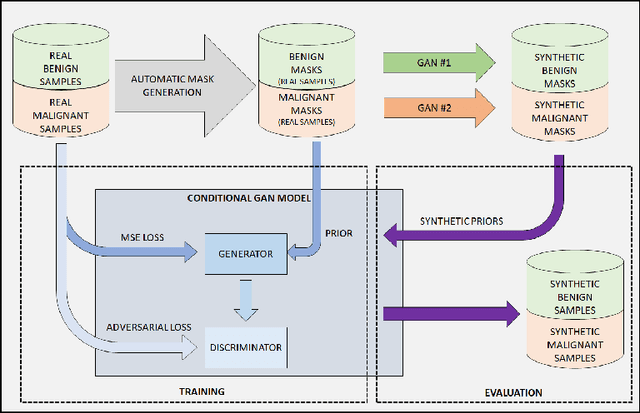



Abstract:One of the most challenging aspects of medical image analysis is the lack of a high quantity of annotated data. This makes it difficult for deep learning algorithms to perform well due to a lack of variations in the input space. While generative adversarial networks have shown promise in the field of synthetic data generation, but without a carefully designed prior the generation procedure can not be performed well. In the proposed approach we have demonstrated the use of automatically generated segmentation masks as learnable class-specific priors to guide a conditional GAN for the generation of patho-realistic samples for cytology image. We have observed that augmentation of data using the proposed pipeline called "SynCGAN" improves the performance of state of the art classifiers such as ResNet-152, DenseNet-161, Inception-V3 significantly.
 Add to Chrome
Add to Chrome Add to Firefox
Add to Firefox Add to Edge
Add to Edge